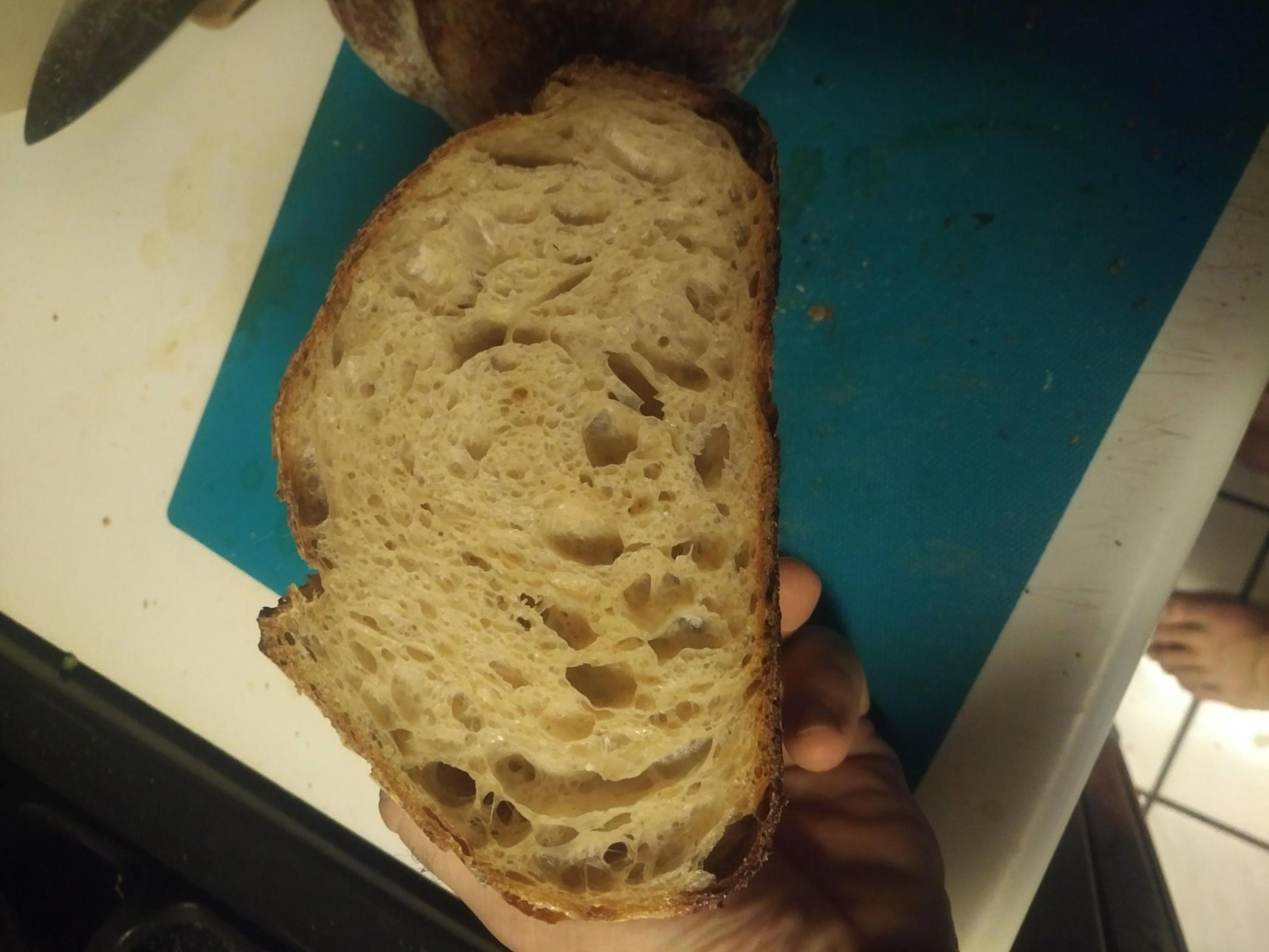August 10, 2020 - 11:09am

Finally a good looking loaf

After several attempts, I am finally narrowing it down and getting closer to the bread I am picturing. I think this the best oven string I have achieved, texture was good and it tasted great.
Wondering about the crumb distribution. Can anything be infered from the open crumb on the bottom of the loaf and the more close crumb at the top?
Slightly under/over proved maybe?




Beautiful looking crumb there.
there's nothing wrong with the variance in density there in my opinion. but i would guess it could be attributed to a few things.
1) I am guessing you final proofed the dough upside down. the air pockets favors moving to the top. when you invert the dough to bake, there's more density on what was the bottom and now is the top.
2) looks like you got some extra color on the bottom of the loaf there, probably baked on a heated baking stone or baking steel. when the dough hits the hot surface, the lower side tends to expand more due to higher heat.
3) possible in shaping, the bigger air pockets just happen to end up on that side of the dough.
did i guess anything correctly? what was your baking process/equipment?
-James
1 yes. Proofed upside down in lined banneton. Totally makes sense now that I think about it.
2. Baked in a enameled coated cast iron Dutch oven preheated to 500deg.
3. Coil folds during bulk, no preshape, simple batard shaping directly after last coil fold.
73%hydration 20% starter 2% salt 1h room temp autolyse 5-6h bulk 12h cold proof. I typically over ferment. This time a used a test piece of dough In a jar to gauge fermentation and it worked Well.
going to try and repeat exactly this weekend.
Regarding what looks to be too much char on the bottom of the loaf.... Benito on here suggests that you use a place a baking pan padded with some crumpled up aluminum foil under the dutch oven to deflect some of the heat. I think either directly under the dutch oven or if there is an empty rack below the dutch oven. if that's an issue. give it a try.
-james
Thanks for the suggestion.
I agree it is dark, but on this particular loaf it was not burnt. I like it, but the wife and kids don't.
This means that there is always a bunch of bottom crusts cut off and left on the cutting board for me to snack on.
I have had a few go a bit too far where it starts to taste burnt and I have used an cookie sheet to deflect heat, but I think the aluminum foil would be helpful.
Hi there, yes I used to have burning on the bottoms of my baguettes and darker than wanted bottom crust on my batards baked in a dutch oven. What I do now is use the broiling rack made of granite ware that seems to come with all ovens (I could never figure that out) I crumple aluminum foil and stuff it with the Al foil. I place that on the lowest rack of the oven and place the dutch oven directly on top of the broiling rack. Your oven maybe larger than mine so if you have the space you could place your dutch oven on the rack above. But broiling rack on the lowest oven rack and the dutch oven on the boiling rack and no more too dark bottom crusts.
When I bake baguettes, I put my baking steel directly on the broiling rack and again bake on the lowest rack. In honest truth, I actually leave the baking steel on the broiling rack all the time as I got tired of removing it so the dutch oven is placed on the baking steel on the broiling rack and I never remove the aluminum foil.